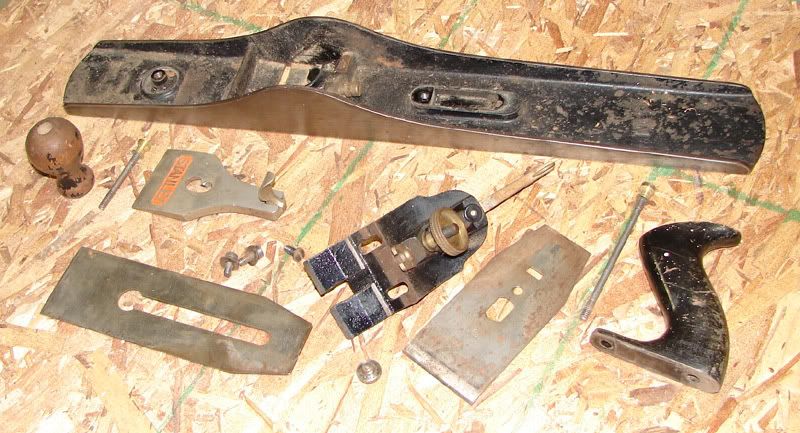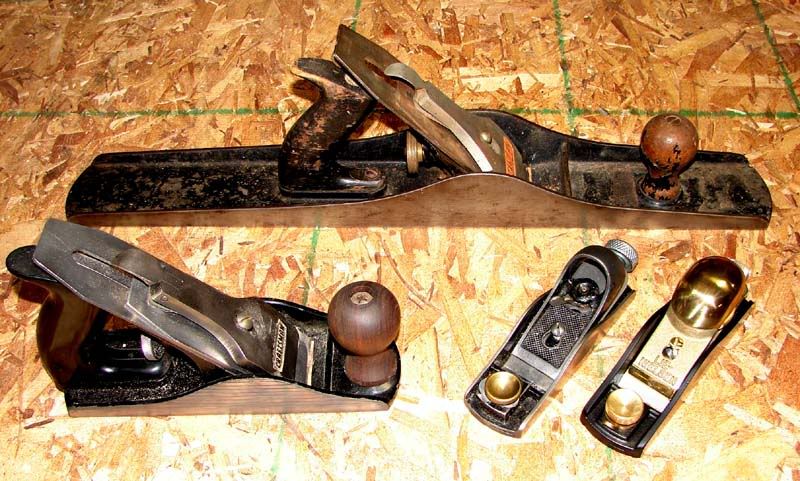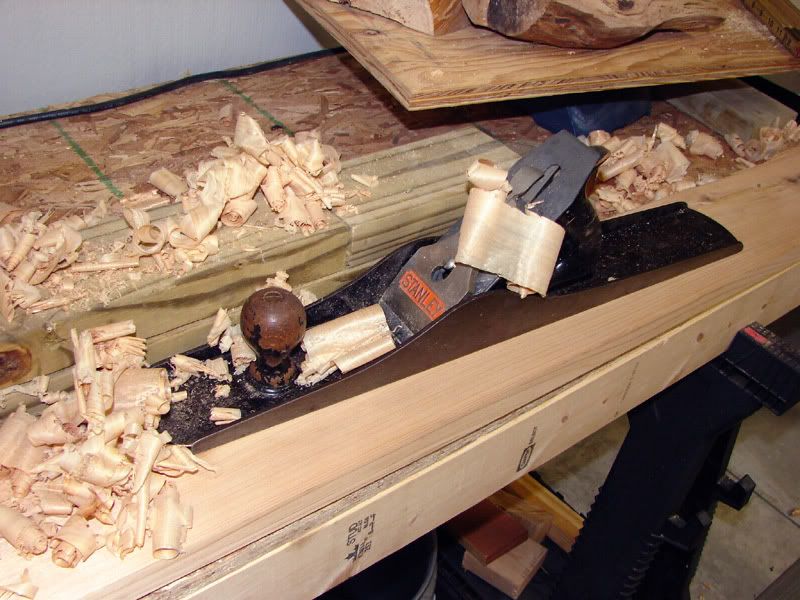I picked up a #7 Stanley. Not sure which one it is? Perhaps it has mixed parts. Here are the details I have:
No patent dates cast into the bed (there are some numbers under the tote - U2 0462.
Plane number is cast into bed.
There is a raised ring for the knob.
No raised flat rib around heel or toe.
STANLEY is printed vertically on lateral adj. lever. (no patent dates)
1.25" Depth adjustment nut has diagonal knurling.
Kidney shaped lever cap hole.
As you can see, the paint is worn off the knob. Is it better to leave it as-is, sand it off, or repaint? Corrugated sole seems flat and in good shape. I will post the clean up picture later.
Here are the plans I have now:
They just keep multiplying !







 Reply With Quote
Reply With Quote










